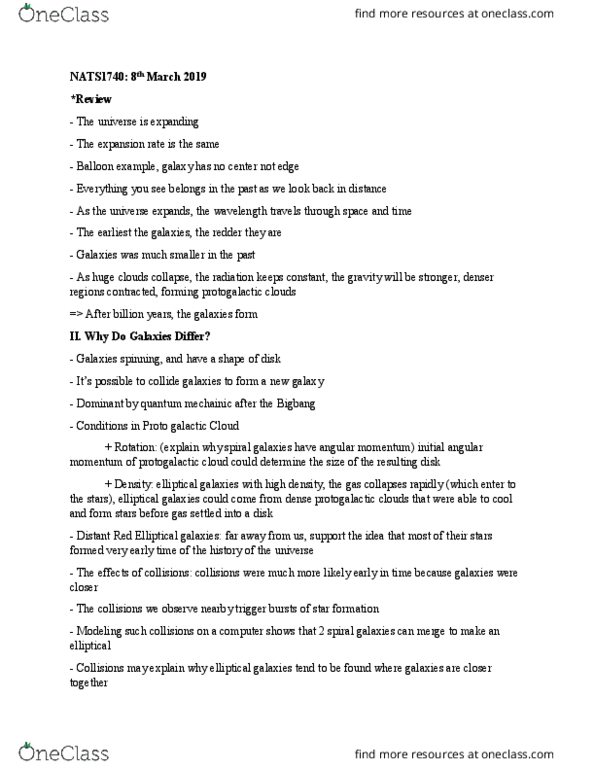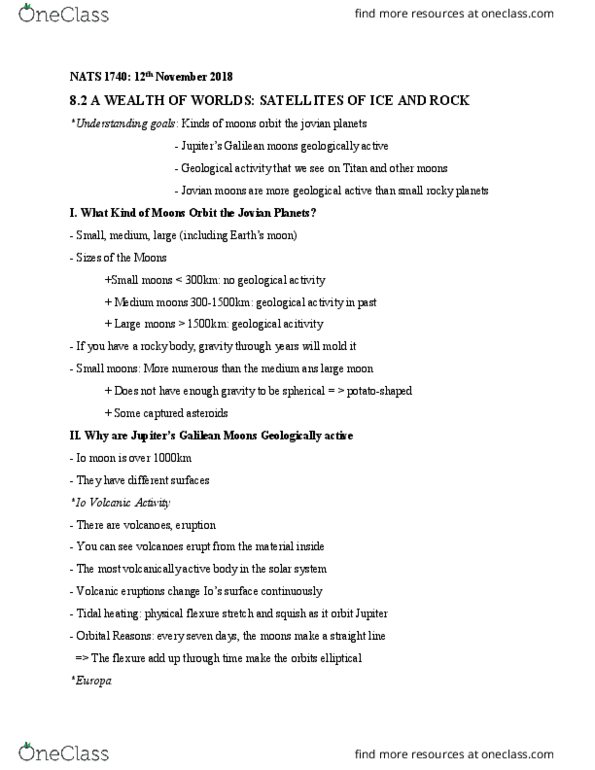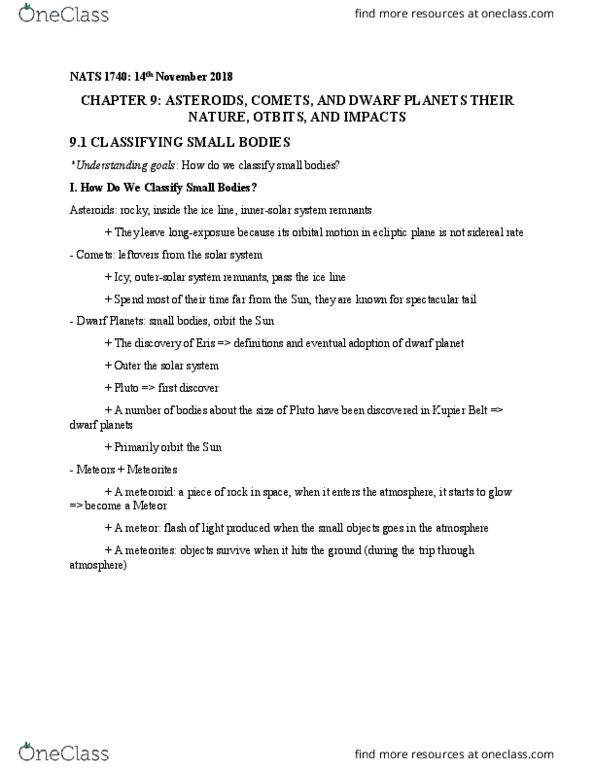NATS 1740 Lecture Notes - Lecture 30: Galilean Moons, Ring System, Light Curve
NATS 1740 verified notes
30/37View all
Document Summary
8. 2 a wealth of worlds: satellites of ice and rock. *understanding goals: kinds of moons orbit the jovian planets. Geological activity that we see on titan and other moons. + medium moons 300-1500km: geological activity in past. If you have a rocky body, gravity through years will mold it. Small moons: more numerous than the medium ans large moon. + does not have enough gravity to be spherical = > potato-shaped. You can see volcanoes erupt from the material inside. The most volcanically active body in the solar system. Tidal heating: physical flexure stretch and squish as it orbit jupiter. Orbital reasons: every seven days, the moons make a straight line. => the flexure add up through time make the orbits elliptical. Different colors, stuffs come up from the material, ice surface. The crack on surface created by the tidal stress. + there is a subsurface, may contain ocean water.




